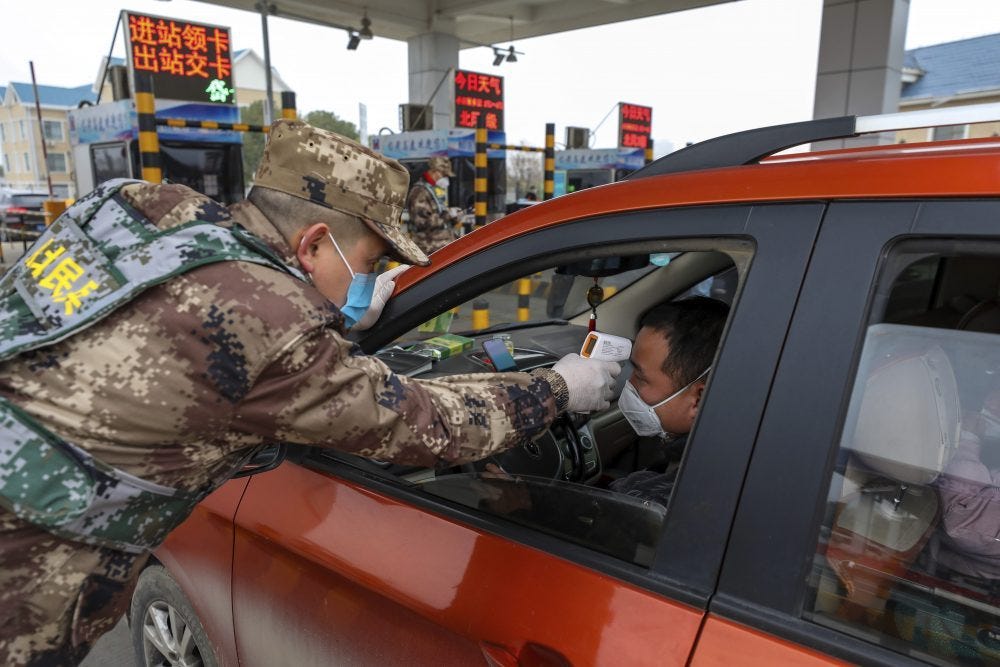
Photo credit: The Portland Press Herald
Welcome back to Blockchain Asia, issue #6. In this issue, we zoom in on China.
Coronavirus COVID-19
Speaking of China, we have to talk about coronavirus.
China is still battling with COVID-19 coronavirus. As of February 16, there are a total of 70, 641 diagnosed patients since the breakout in late December, of which 12,459 are outside Hubei Province, the epicenter of the virus. Deaths are 1,772, of which 76 are outside Hubei Province.
3 deaths have been reported outside of China, including a Chinese who traveled to France.
An increasing number of companies in Mainland China and Hong Kong have resumed work after an extended Spring Festival holiday. While schools remain closed they have turned to virtual classrooms to keep up with the schedule.
In the following weeks, the data regarding infected patients and deaths outside of Hubei Provine is critical. It will help people better understand whether, with preventive measures, the spread of the virus can be put under control and whether, with early detection and more treatment experience, the mortality rate can go further down.
Why does the Hubei Province, esp. the capital city Wuhan and its neighboring cities, have a higher percentage of contamination and mortality rate than other places in China?
First, it is the epicenter of the virus. Second, ignorant of the virus’s danger, the local government failed to take immediate action to contain the spreading of the virus. Third, a large number of infected locals were not timely diagnosed, quarantined or properly treated, due to lack of medical facilities to accommodate a sudden explosion of patients, low accuracy of test kits and long wait times for diagnostic results.
Blockchain adoption in the face of a pandemic
After the breakout of the virus, about 20 blockchain-based applications have been deployed in February, most of them related to patients/disease data and information monitoring and managing and sponsored by governmental entities and State-owned enterprises.
One of the applications is for Nansha District CDC (Center for Disease Control and Prevention) in Guangzhou City, Guangdong Province.
Within 3 days the platform was created for the CDC on the blockchain RepChain, initially developed by the Software Institute, the Chinese Academy of Sciences in 2017.
It pulls in necessary data in real-time, enabling CDC to monitor, track, report information on the disease, both on PC and mobile, for decision-making. If the platform proves successful, it may be adopted by China’s national CDC.
According to a published paper, “RepChain (Reactive Permission Chain), a reputation-based secure and fast blockchain system via sharding, provides high incentives to stimulate node cooperation. RepChain utilizes reputation to explicitly characterize the heterogeneity among the validators and lay the foundation for the incentive mechanism. We propose a new double-chain architecture which includes transaction chain and reputation chain.”
Outside of China, companies are also turning to blockchain/DLT to track the epidemic for more transparency. Atlanta, Georgia based Acoer developed a coronavirus real-time tracker distributed on the DLT public network Hedera Hashgraph.

Blockchain Asia covers exclusively blockchain developments in Asia, including regulations, investments, new deals and company highlights. It is owned by Kee Global Advisors. For previous posts, please visit here.




